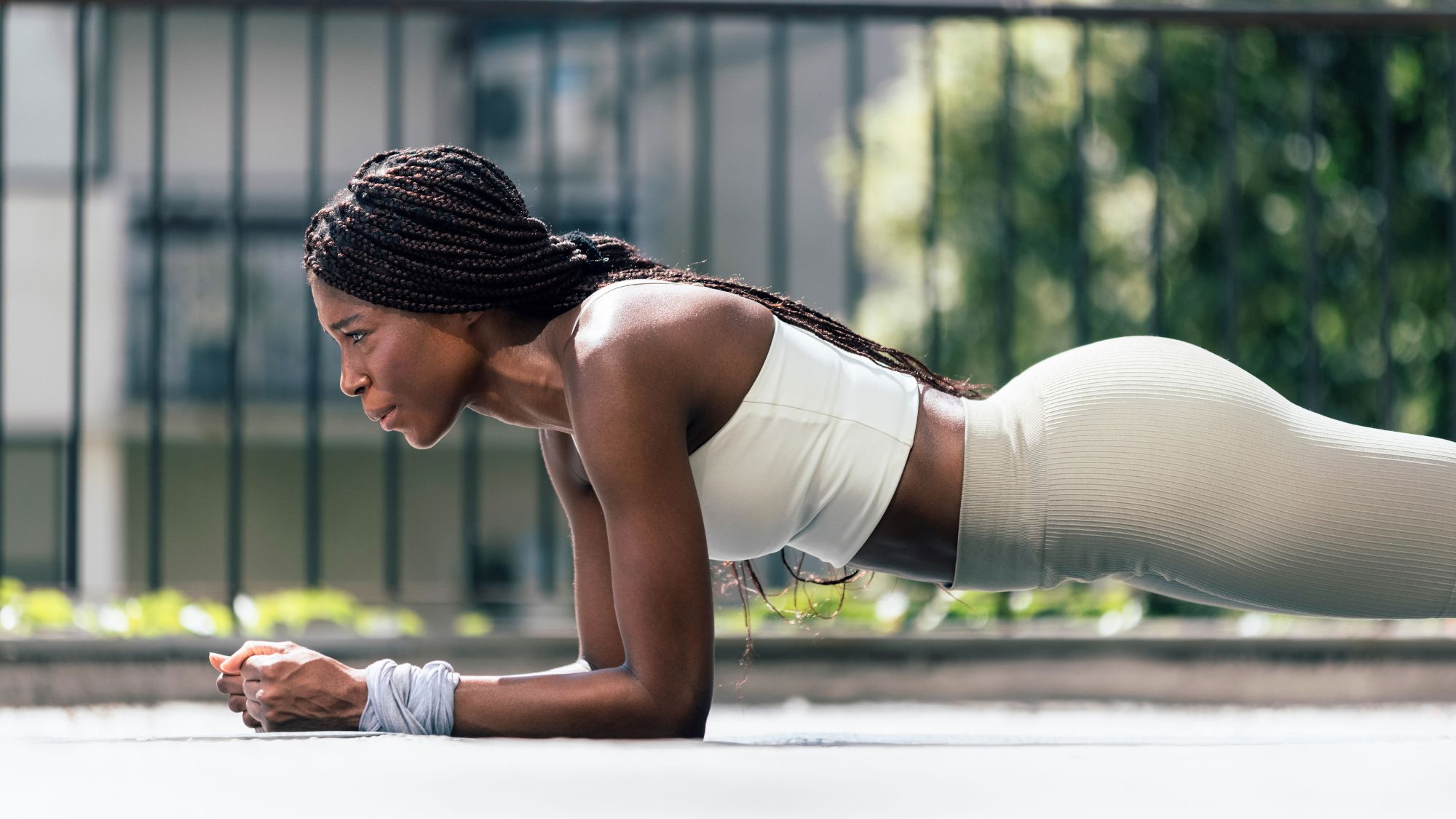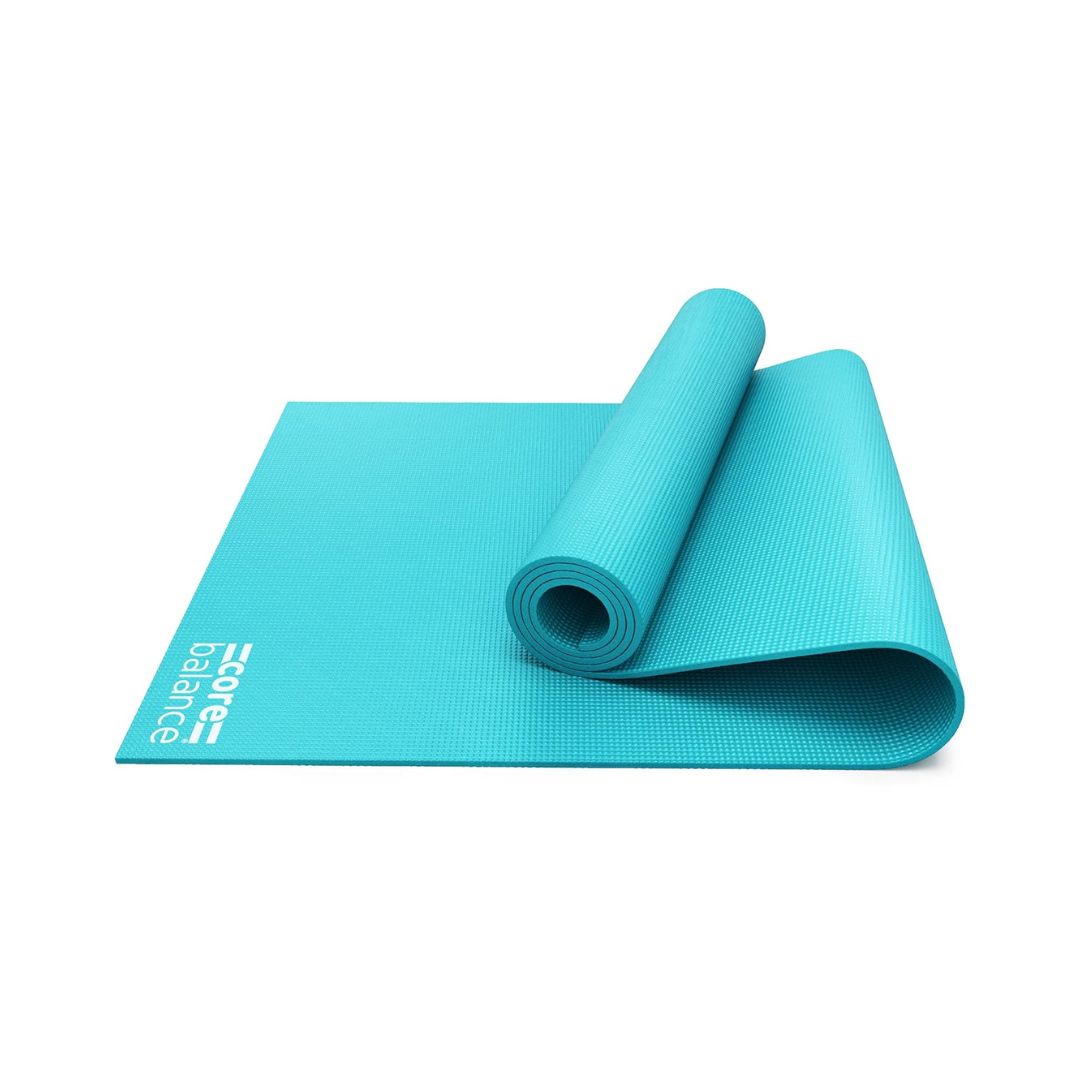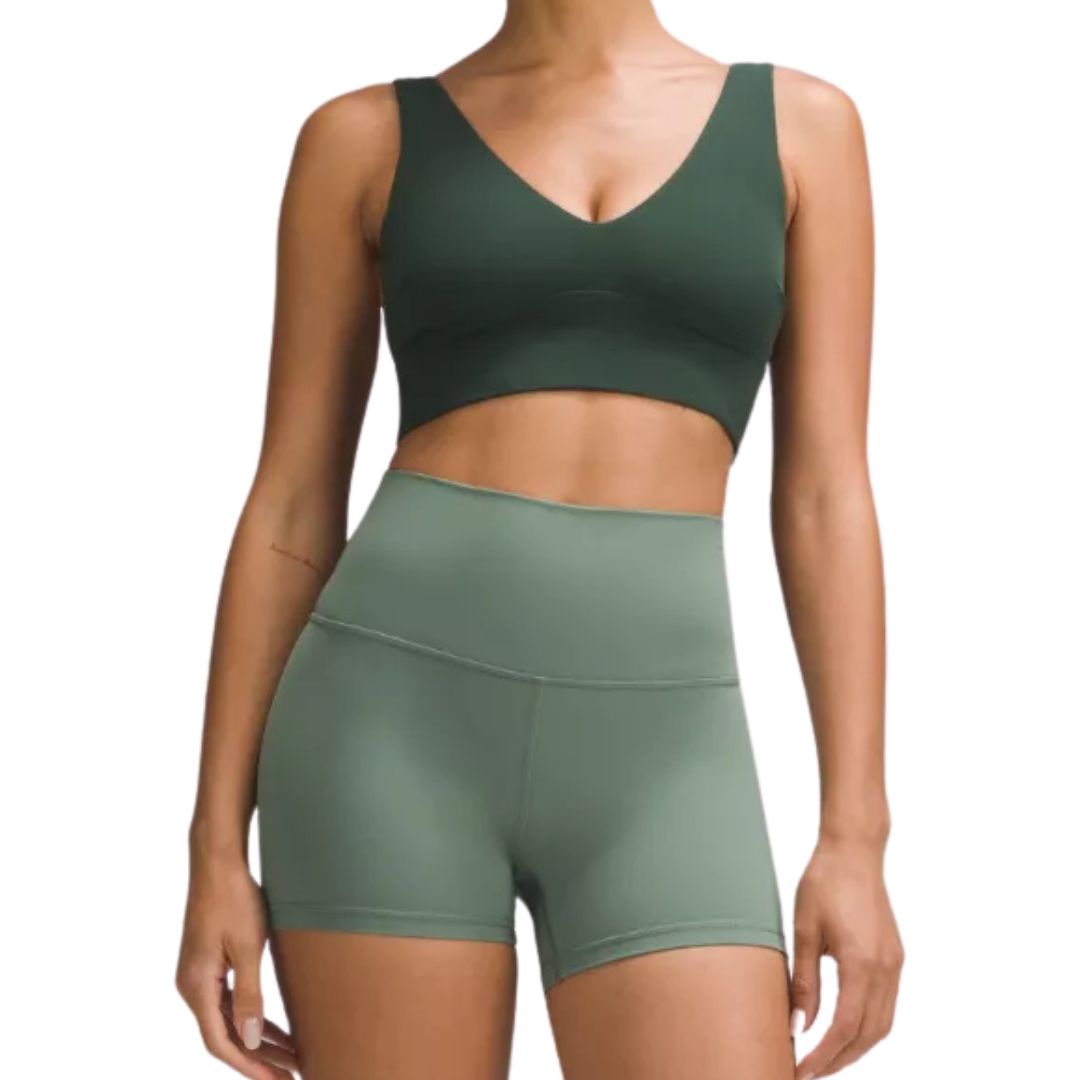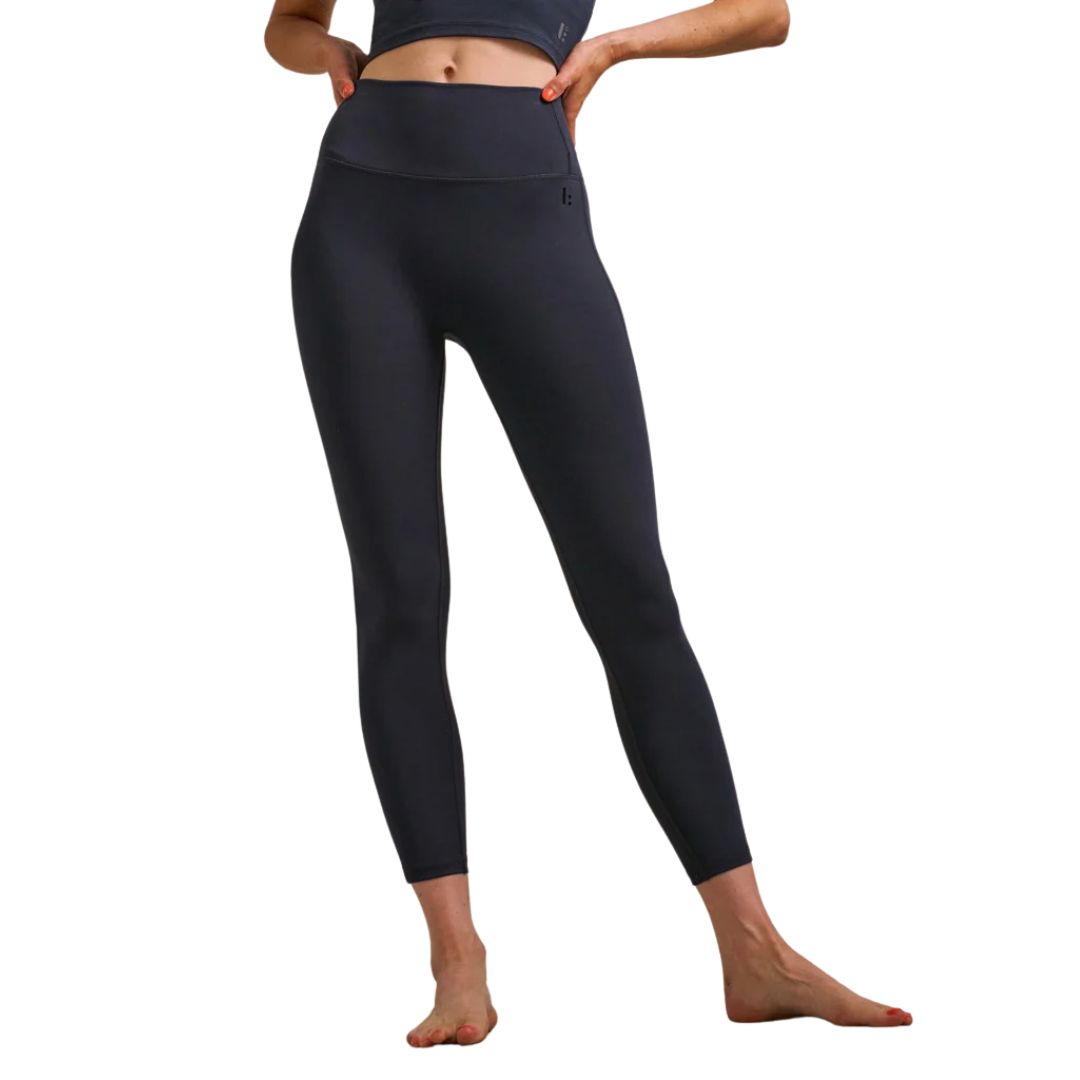Planks are one of the best full-body workout moves you can do – 4 different types, plus which is most effective
This one's worth reading.


Widely considered the creme de la creme of core exercises, the plank is a firm favourite among fitness pros for more reasons than one. Recruiting multiple muscle groups, it’s a compound movement that helps to build entire body strength, stabilise the spine and improve posture – and there are so many variations, the move is suitable for most experience levels. But, what types of planks are the most effective?
If the exercise is new to you, PT Aimee Victoria Long describes the plank as an isometric movement that involves maintaining tension and holding a position similar to the starting point of a push-up, for a period of time. “It primarily engages the abdominal muscles, but it also works the back, shoulders, arms, and legs,” she explains. In a study published last year in the British Journal of Sports Medicine, isometric exercise – specifically, wall squats and planks – was identified as beneficial for lowering blood pressure.
And that’s not the only pro to introducing planks into your training programme. While research, on the whole, is a little thin on the ground where the benefits of planking on the female body, specifically, is concerned, there is evidence to further support that regularly doing planks is positive for all-around health and wellbeing. A study from 2021, which explored the effects of planking on the physical fitness and immune cells of middle-aged men, concluded that doing high- to very-high-intensity planks five days a week for four weeks resulted in improved immunocyte function and overall fitness.
But the question remains: which types of planks should you add to your routine? Read on for Long’s advice or read how one MC UK writer got on trying a plank every day for a week, here. And don't skip our guides to how effective are planks, how effective are squats and how effective are lunges, while you're at it.
There are loads of different types of planks - so which is best for you?
What are planks?
You'll likely already know this, but in short, a plank is a popular bodyweight workout move that consists of you holding a - yep, you guessed it - plank position for a dedicated length of time. The isometric move involves holding your body in a straight line and resting on your toes and hands or elbows and promises to strengthen your core muscles.
What are the benefits of doing a plank?
We’ve already touched upon the all-round wellbeing benefits of doing planks regularly – but what other positives do they present?
Well, for starters, the plank is a top tier exercise for building core strength. “This is essential for overall stability and balance,” says Long. Having a strong core will help you complete everyday tasks, such as picking heavy items off the floor, and reduces your risk of injury – particularly as you age. Additionally, it will help you advance in your training. “A strong core can improve your performance in various sports and physical activities,” Long explains.
Celebrity news, beauty, fashion advice, and fascinating features, delivered straight to your inbox!
Another key benefit of working planks into your routine is improved flexibility. “Planks can help stretch and expand the posterior muscle groups (your hamstrings, glutes and lower back),” says Long. Along with strength, flexibility is important for injury prevention.
Finally, part of what makes planks so popular is how accessible they are. It’s an exercise that’s suitable for all experience levels – with no special equipment or financial investment involved. Whether you’re advanced or a beginner, at a kitted out facility or on the floor of your kitchen, there’s a plank variation for you. That said, it’s important to be mindful of your current circumstances when considering introducing any new exercise into your routine. “If you have lower back issues and your form is poor you heighten the risk of injury,” explains Long. “Likewise, if you have a shoulder injury a plank could be something you may want to avoid.”
How do you do a plank correctly?
To perform a standard plank with quality form, Long instructs:
- Begin on your hands and knees on a mat.
- Place your forearms on the ground, elbows directly under your shoulders. Your hands can be flat on the ground or clasped together. Keep your elbows directly underneath your shoulders to allow you to stay as strong as possible through your shoulder joint.
- Step back with your feet until your body forms a straight line from head to heels. Keep your feet together or slightly apart for stability.
- Tighten your abdominal muscles and glutes to maintain a straight body line. Think sucking your belly button towards your spine and squeezing your glutes.
- Keep your neck neutral by looking down at the mat, not in front of you.
- Maintain this position without letting your hips sag or rise.
How long should you hold a plank for?
The ideal plank duration really depends on your experience and your goals. Long advises that complete beginners start with 15-30 second holds for two-three sets, and gradually increase to one-two minute planks as your strength improves.
As for lengthy plank holds, the likes of which you may have seen shared on social media as part of a plank challenge? There are pros and cons, according to Long. “Holding a plank for extended periods can help build endurance, but it's crucial to maintain proper form,” she says. “While some fitness enthusiasts engage in planks lasting several minutes, the effectiveness diminishes after a certain point. Longer holds may lead to fatigue, compromising form and increasing the risk of injury.” Ultimately, the focus should be on quality over quantity.
4 of the best types of planks for building strength, recommended by a PT
1. Spiderman plank
What? An oblique-focused plank iteration.
Why? "I love this plank variation because it involves working your obliques more than a standard plank," says Long.
2. Bear plank
What? Another plank variation, this time building muscle in your deep core.
Why? "The bear plank is another example of a good plank variation," says Long. "It's a spine-friendly exercise that really utilises the transverse abdominis and helps build into your deep core."
3. Side plank
What? The clue's in the name with this one - a side plank quite literally translates to giving the exercises a go on your side.
Why? "Side planks are amazing not just for strengthening the side of your core, but also for knee health and abductor strength," says Long.
4. Chainsaw plank
What? Another plank variation that incorporates movement to challenge different muscle groups and is a great option for those of you who find the static options a bit boring.
Why? "This variation looks a lot like a standard plank but involves rocking back and forth," Long explains. "It's great for strengthening your core and also your shoulders."
Shop MC UK approved workout kit now:

Abbi Henderson is a freelance journalist and social media editor who covers health, fitness, women’s sport and lifestyle for titles including Women's Health and Stylist, among others.
With a desire to help make healthcare, exercise and sport more accessible to women, she writes about everything from the realities of seeking medical support as a woman to those of being a female athlete fighting for equality.
When she’s not working, she’s drinking tea, going on seaside walks, lifting weights, watching football, and probably cooking something pasta-based.






